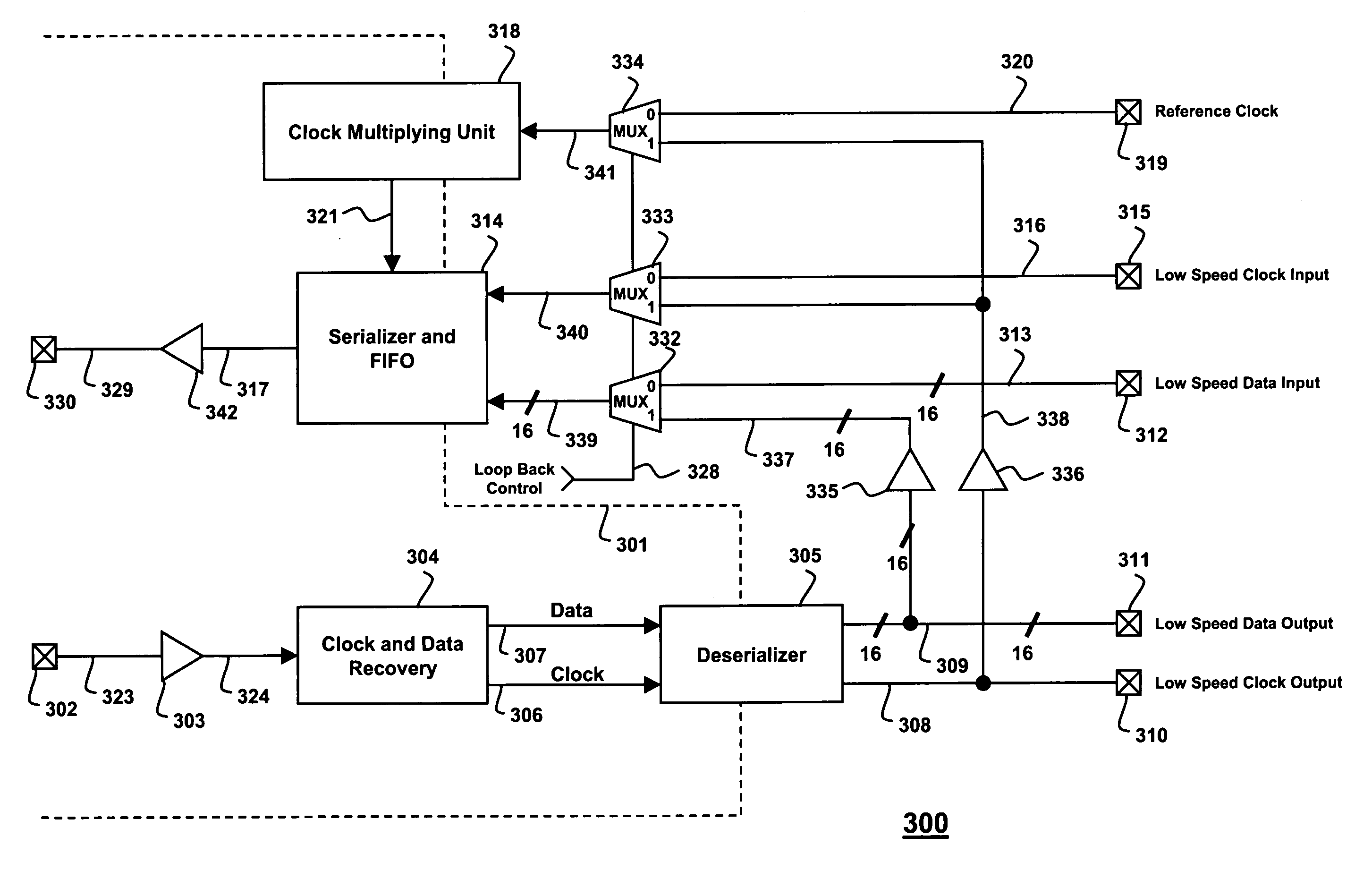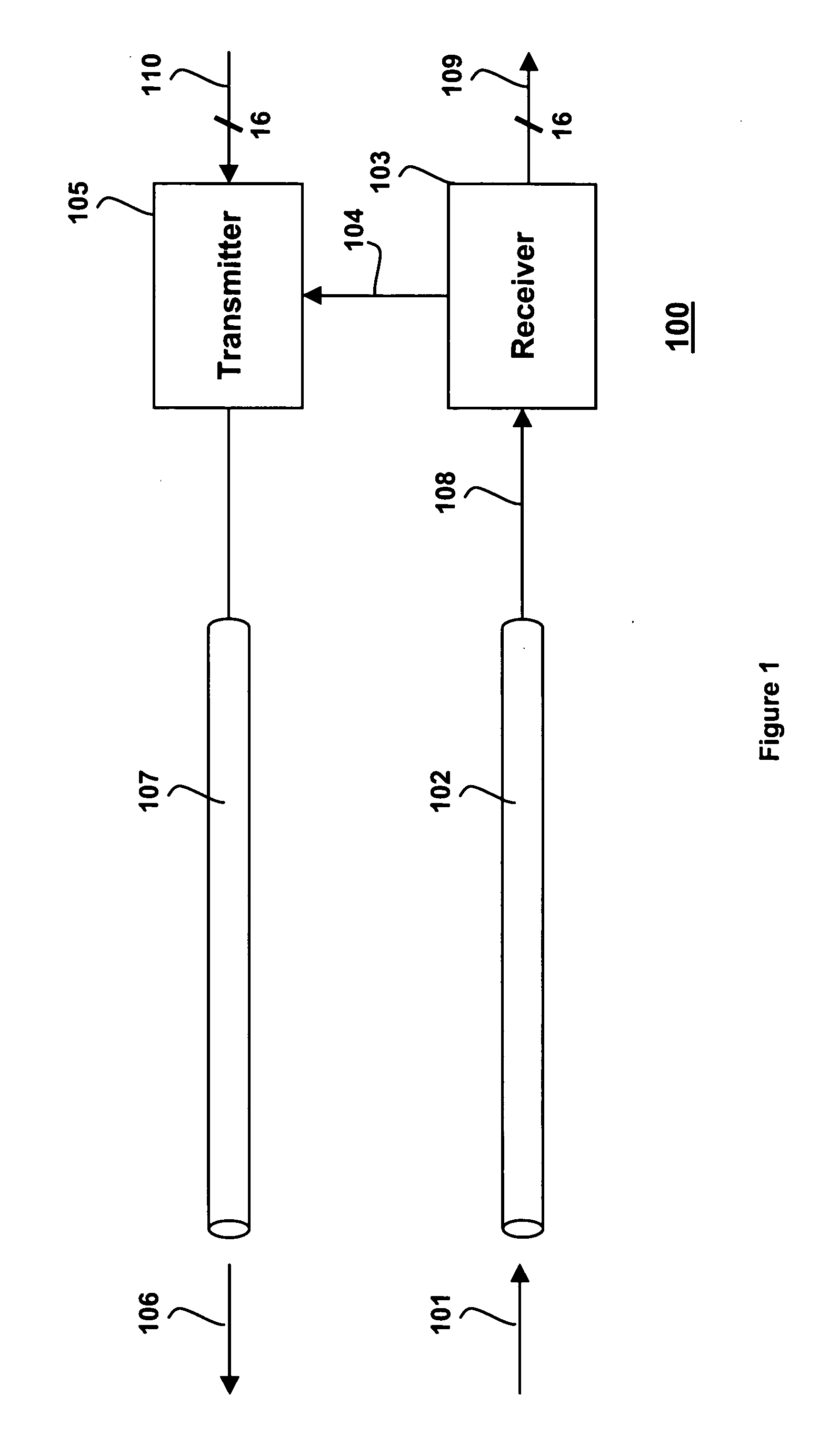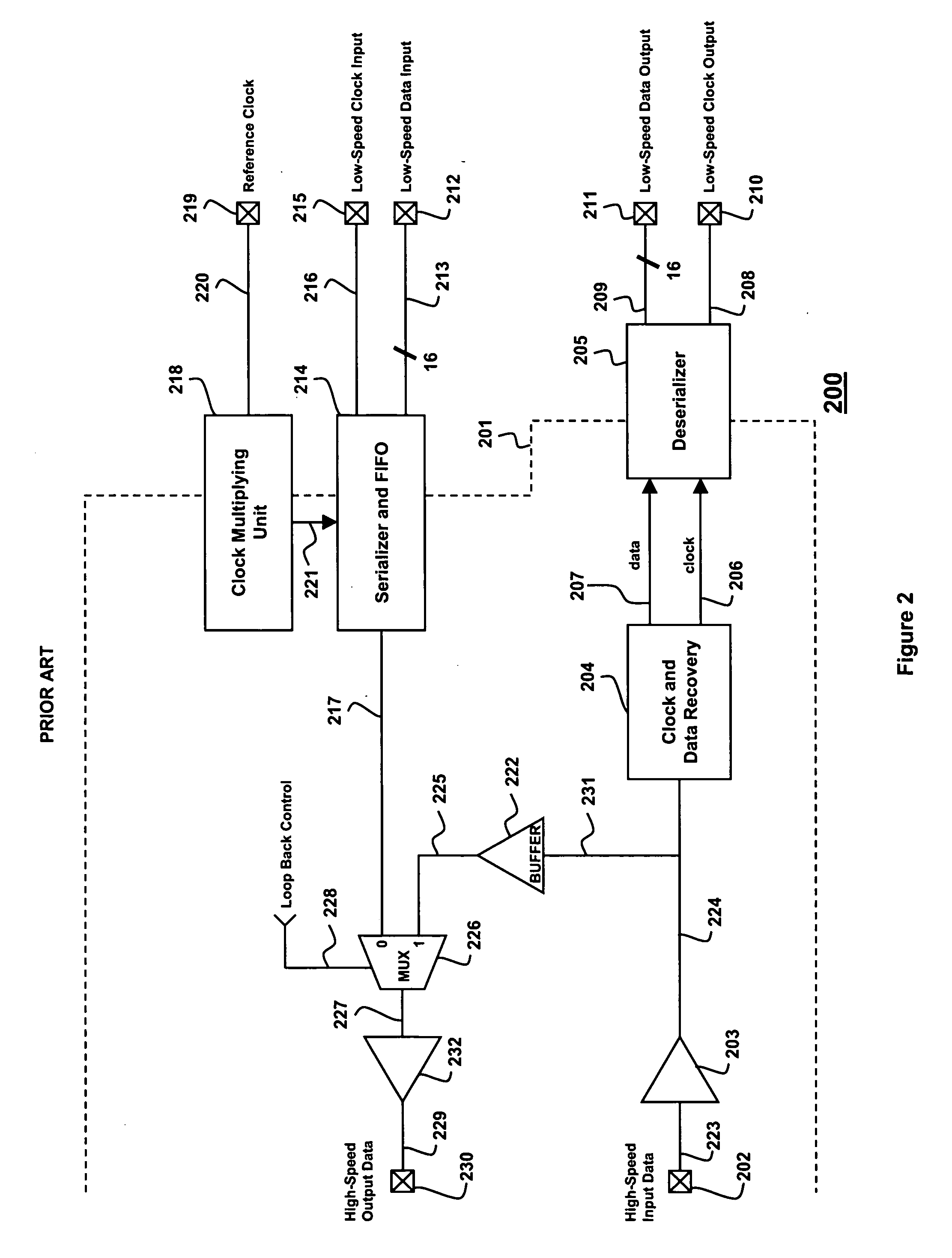Line loop back for very high speed application
a very high-speed, line loop back technology, applied in the direction of frequency-division multiplex, instruments, transmission monitoring, etc., can solve the problems of consuming large amounts of power, adversely affecting the jitter performance of normal mode transceiver operation, and inefficient and complex implementation of line loop back, etc., to achieve high-speed noise coupling effect and reduce noise coupling
- Summary
- Abstract
- Description
- Claims
- Application Information
AI Technical Summary
Benefits of technology
Problems solved by technology
Method used
Image
Examples
Embodiment Construction
[0020]Transceiver circuitry must have the capability to test bi-directional communication links to which they are connected. FIG. 1 illustrates the concept of a line loop back test addressed by the present invention. In some applications, there are separate integrated circuits that implement the receiver 103 and the transmitter 105, and also separate integrated circuits that perform the low speed upstream and downstream processing. In other applications, there is a single integrated circuit that acts as a transceiver and another single integrated circuit that receives and transmits lower speed parallel data. Other combinations are also possible. Ultimately, all of the high speed transceiver circuitry and lower speed parallel circuitry can be implemented on a single chip. Therefore, the separation of the various components can be arbitrarily partitioned. In the embodiment described herein, however, all of the circuitry required to implement the present invention is placed on the same...
PUM
 Login to View More
Login to View More Abstract
Description
Claims
Application Information
 Login to View More
Login to View More - R&D
- Intellectual Property
- Life Sciences
- Materials
- Tech Scout
- Unparalleled Data Quality
- Higher Quality Content
- 60% Fewer Hallucinations
Browse by: Latest US Patents, China's latest patents, Technical Efficacy Thesaurus, Application Domain, Technology Topic, Popular Technical Reports.
© 2025 PatSnap. All rights reserved.Legal|Privacy policy|Modern Slavery Act Transparency Statement|Sitemap|About US| Contact US: help@patsnap.com



